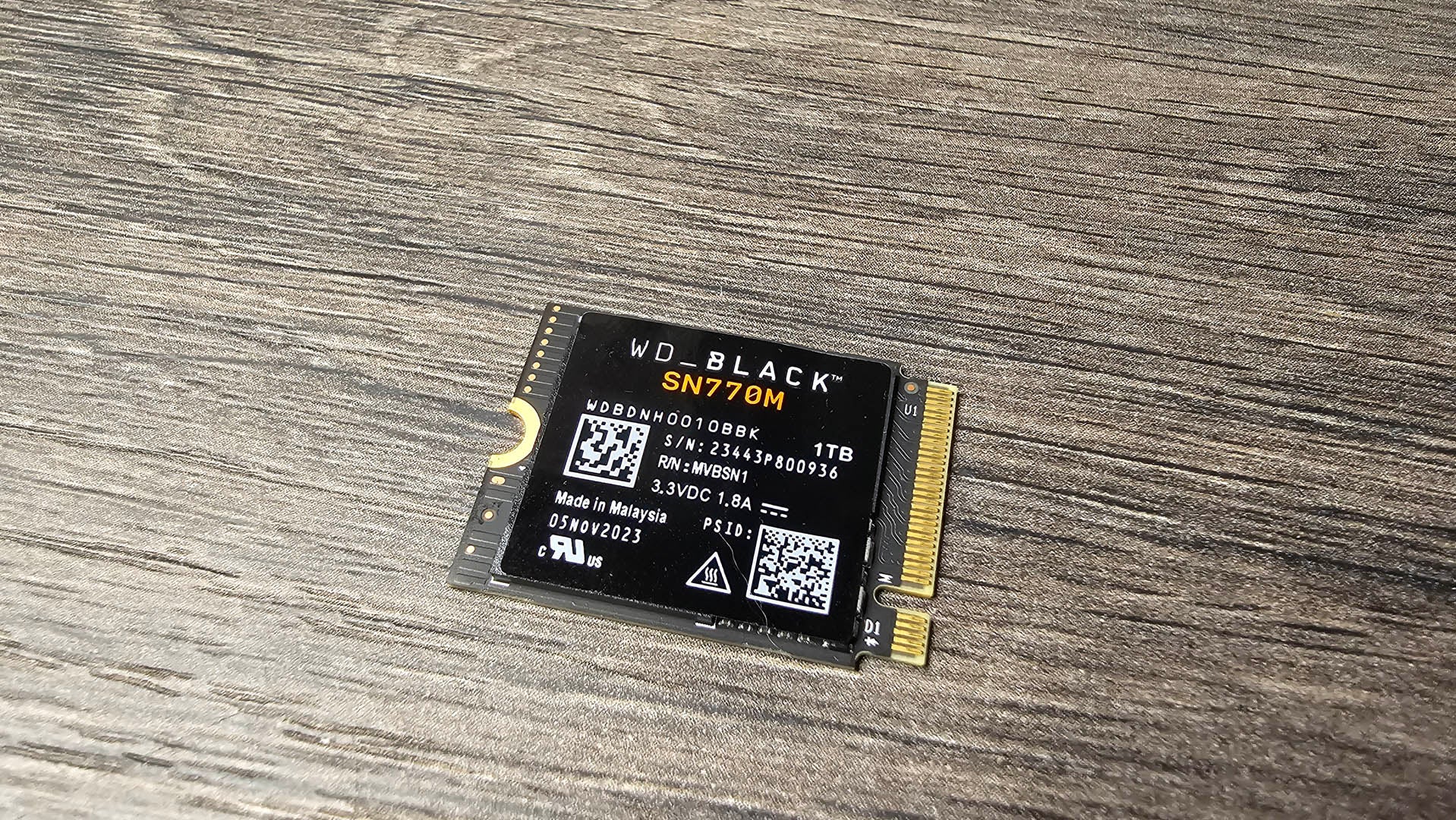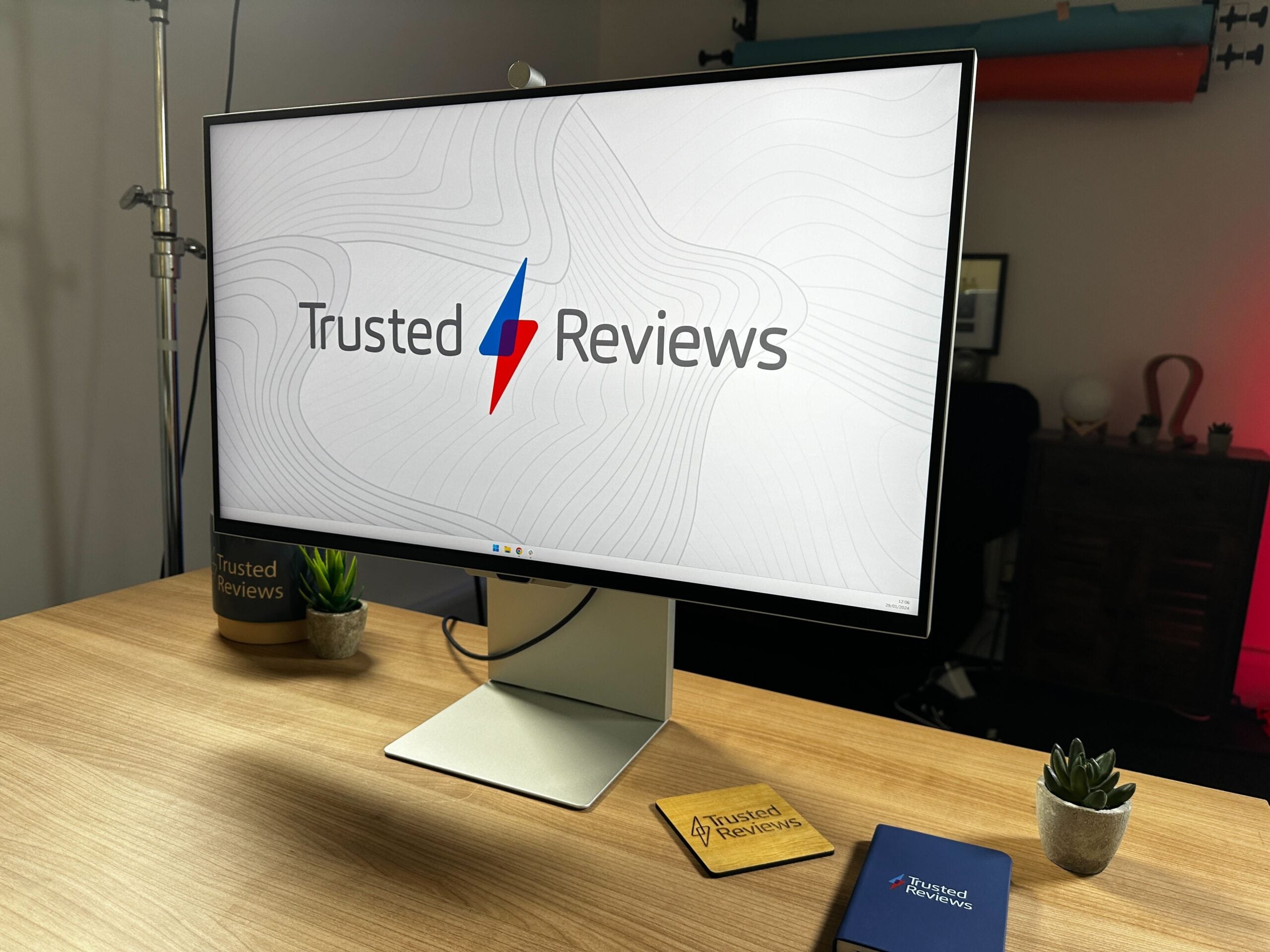Asus Vivobook 16 Review
A solid, if basic, £700 laptop






Verdict
The Asus Vivobook 16 could be the lightweight laptop you’ve been looking for if you’re on a £600 budget. Expectedly, it sheds a few of the fancier ultrabook features to keep the cost low, but you get capable productivity performance and a sturdy build.
Pros
- Good battery life
- 16:10 aspect ratio
- Big trackpad
Cons
- 60Hz display
- Limited capabilities
Key Features
- 16:10 aspect ratioConsidered the sweet spot for multitasking, the large 16:10 display is great for getting stuff done.
- Lay-flat hingeDesigned for collaboration, the screen can go down to 180-degrees, giving more people room to see what’s going on.
- Solid batteryLasting around seven hours off heavy use, it’s good for a day in the office
Introduction
At between £600 and £750, the Asus Vivobook 16 (X1605Z) sits somewhere between a mid-range office laptop and a flashy ultrabook in terms of pricing. And that’s about where it sits in terms of performance, too. It’s just not quite built like the top-end of the market’s offerings with its plastic chassis and obvious seams.
When viewed as the next in line of this year’s Vivobook stack, the 16-inch version rectifies many of the shortcomings of its Asus Vivobook 15 sibling, while bringing a few other bells and whistles along for the ride. If you view the size increase as a win, it’s easy to recommend. But if a 16-inch machine is a little too big for your bag, you might have a harder time weighing up the pros and cons of its £100 uplift.
Being a mid-range machine, there’s little the Asus Vivobook 16 does exceptionally well beyond basic computing tasks. That isn’t a complaint. It’s just the shortcuts it takes to hit its price point that hold it back from appealing to other niches of the job market. The speakers aren’t great, and the screen could have been faster, brighter, and more accurate. And if don’t mind shopping around, you actually can fix those problems at the same price.
Design and Keyboard
- Sturdy, all-plastic chassis
- Fairly thin and light
Removed from its easily recycled and thin enough cardboard packaging, the Asus Vivobook 16 will shock. The Cool Silver edition we got in for testing catches and diffused the light wonderfully. There are no shimmer or glittery coatings like you’d find in many of today’s smartphones. Instead, it’s a simple design that will evoke images of Apple’s iconic MacBook line. The all-plastic chassis won’t.
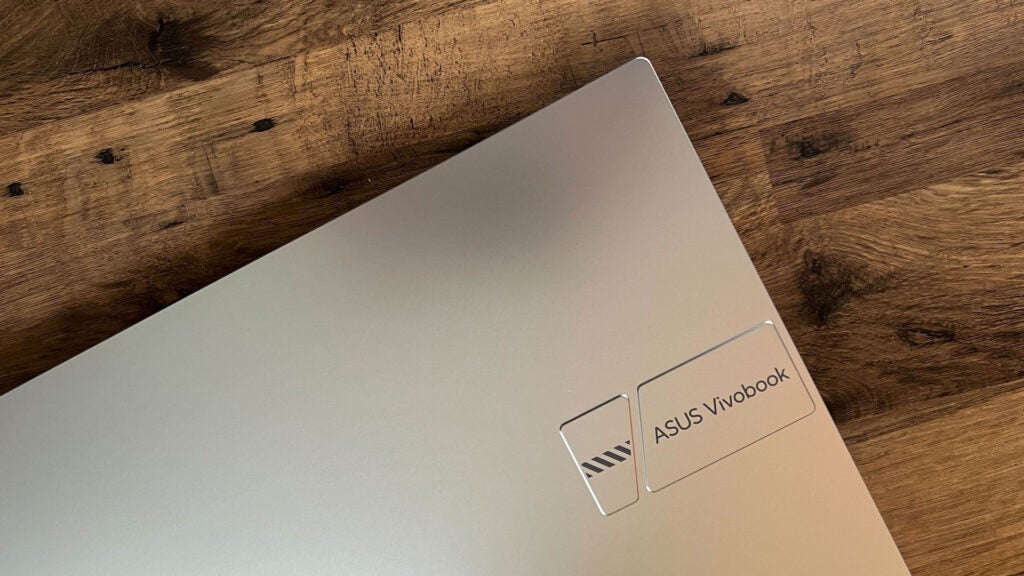
Being a bit of a fingerprint magnet, both the silver and black finishes look great out of the box but will need frequent buffing to keep clean. Personally speaking, the silver lid isn’t my style. It’s a little too bright. Although there’s little doubt that black would have been more my style, I can’t help but feel it’s trying a little too hard to look premium when the materials just can’t carry it forward.
Thin and light at 1.88 kilograms, it’s comfortable enough for long periods of use, and just thin enough to cram in the fans necessary to keep it cool under a light workload. At a push, the keyboard gets just warm enough to keep your fingers from feeling the chill on a crisp autumn night. It’s backlit, too: something the 15-inch version skimps out on.
The right side of the deck houses two USB-A ports, a USB-C port, and headphone jack, a full-sized HDMI port, and a barrel-style charging port. The left has little more than a third USB-A positioned at the very top, which works well for adding ethernet back into the mix by way of a dongle. There’s also another vent here in case the bottom is obstructed.
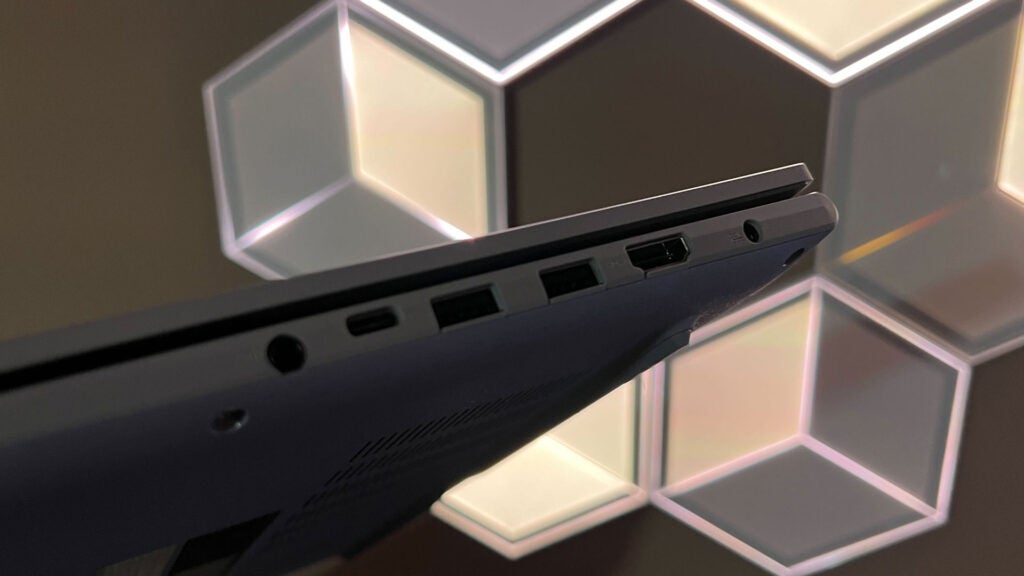
The full-sized keyboard feels great and it only took a couple of hours to adjust from my smaller iPad keyboard. There’s minimal movement in the deck, the keys are properly stabilized, and they don’t sink too far down to accurate. Guides are present to keep you in your place, and there’s even a tiny function key row at the very top. With a numpad included for good measure, you know Asus designed this with office use in mind.
I thought the engorged 17.5 square inch trackpad was a little too big for my liking, but that was not the case. It’s not necessary in my view, but there would have been empty space otherwise. The palm rejection performs well enough to alleviate the concern of a touch-sensitive space sitting directly beneath your hands.; which is great given there’s little room to rest them as you type otherwise.
Display and Sound
- Pleasing IPS panel
- Poor speakers
The good news is that the Asus Vivobook 16 does improve on one major issue of the marginally cheaper and smaller Asus Vivobook 15 – the screen. The IPS panel makes its flat hinge gimmick somewhat useable for sharing information on a meeting room table. A tent hinge would have been nice, though.
Colour accuracy jumps to around 69% of the sRGB colour space, battering the 52% rating of the smaller, less capable machine. You also get 51% Adobe RGB and 51% DCI-P3. It gets brighter, too, but not enough to make outdoor visibility much better. If you don’t mind the extra size, the 20% price uplift is a no-brainer. It’s still not recommended for colour-accurate work, but it’s fine for casual use, and much better for movies with a massively improved 1440:1 contrast ratio.
What you will need to think about here is how the speakers are positioned on the underside of the chassis. Not only will they not fire directly at your face, but they’ll rely on sitting on a flat surface to manage any sort of meaningful bass. Even in perfect conditions, these aren’t great. They’re loud enough, but they’re empty, with fuzzy lows and harsh highs. Headphones are recommended, and the 3.5mm headphone/microphone jack is there to accommodate.
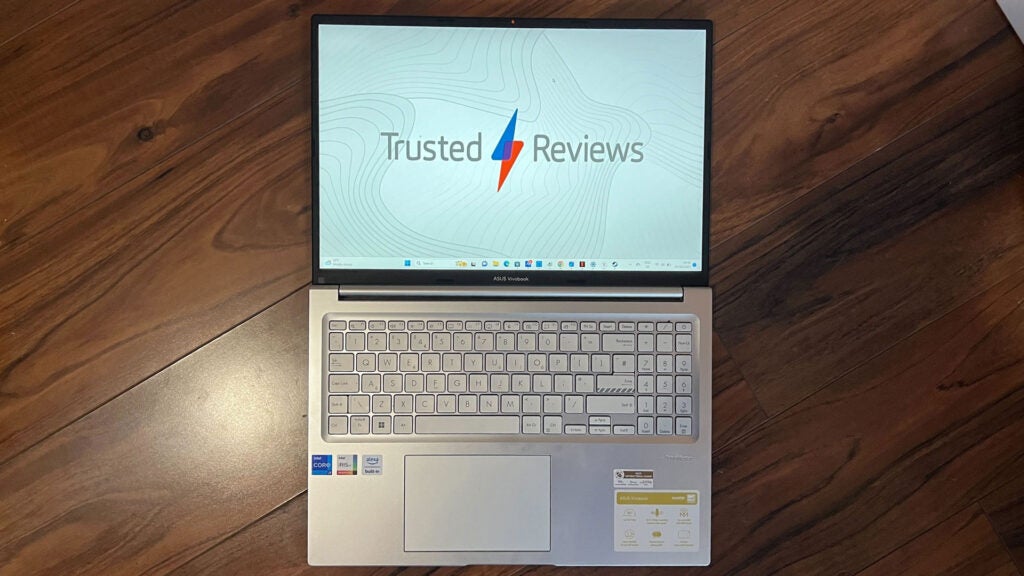
Performance
- Bags of productivity capability
- Quiet fans
So long as you’re not expecting this to be some pixel-pushing powerhouse, the Asus Vivobook 16 will serve you well. The sheer number of tabs I regularly have open for research, notes, cross-referencing, image sourcing, and number crunching can range in the two-dozen mark. And these days, a single online magazine can sap a large percentage of your machine’s memory. The 11th Gen Intel Core i7 CPU, 16GB RAM and 512GB SSD memory configuration here didn’t break a sweat.
Even with YouTube Music in the background, Photoshop open with multiple images, a Steam game downloading, Slack and Discord pinging away, and numerous benchmarking suites I forgot to close, I had no issue getting this written up on the couch with a tall coffee nearby.
However, the Vivobook 16 and its Core i7 didn’t astound in our benchmark testing, failing to shine up against cheaper Core i5-wielding rivals like the HP Pavilion SE 14 and Asus Vivobook 15. You certainly get extra headroom with the 16GB RAM onboard but don’t expect immense power from this device.
I would have preferred a completely silent machine on my lap, but power comes at a (heat) cost. Thankfully, a plastic chassis works wonders here. The fan noise wasn’t loud at all: it just hit that point where when it stops, you realise it actually wasn’t as quiet as you thought. In a more casual scenario, it’s as quiet as a mouse.
The big display on this machine could make it a perfect gaming companion if not for the lack of a dedicated GPU. Integrated graphics have come a long way in recent years, and Cloud Gaming options have made it better still. But the Iris Xe technology in the Intel i7 can’t do any serious modern gaming here.
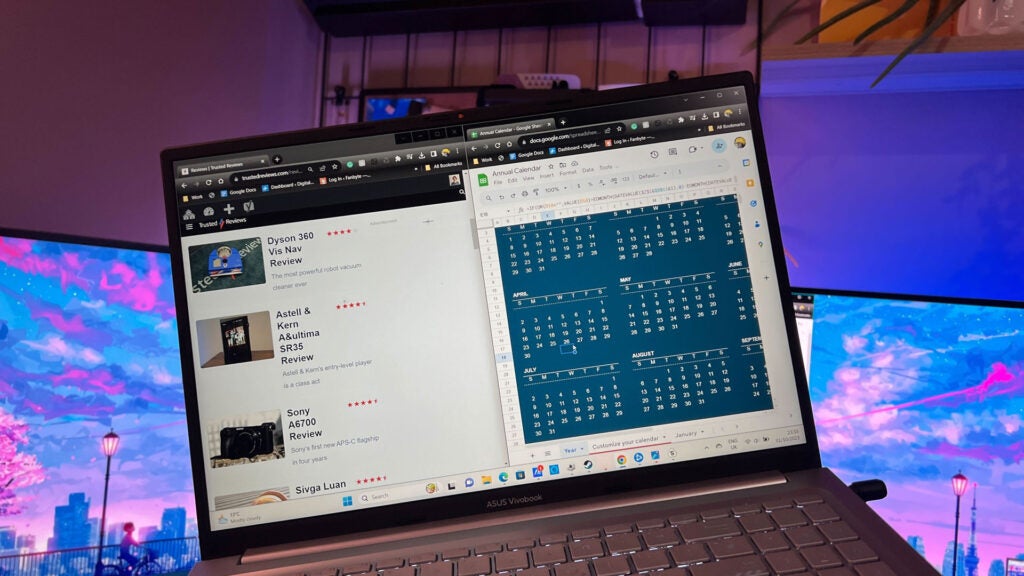
Our usual benchmarks like Returnal wouldn’t launch, and Cyberpunk 2077 benchmarking in the low teens means you’re looking at older titles from five or six years ago, nostalgic emulation, and maybe light esports titles like League of Legends and Valorant. Just don’t expect to go pro.
A 25fps average in Overwatch on the lowest settings won’t see you through to the big leagues, and even a switch to 720p resolution couldn’t help it hit a stable 60fps. Counter-Strike 2 – another esports title that tends to prefer Intel CPUs – fared no better.
The SSD speeds are in the solid camp but are verging on being unpleasantly slow. The results come in at 3046Mb/s read and 1654Mb/s write. Performance was unaffected by the fairly unimpressive speeds and file transfer should still be quite speedy.
Software
- Not much bloatware
- Useful MyAsus software
A sliver of silver lining here is that the Asus Vivobook 16 doesn’t carry much software bloat. Beyond a copy of McAfee that’s easy enough to scrub from its systems, it’s primarily first-party companion apps you’ll want to try, avoid, or delete. Being proudly powered and branded by Amazon’s Alexa assistant, it’s at least more useful than Microsoft’s outgoing Cortana.
MyAsus, the hardware manufacturer’s support portal, includes a bunch of toggles for various features of middling quality like AI noise cancellation for calls. This is one you can hear in action on the laptop’s spec site that’ll certainly have your boss questioning if you’re even real.
At a push, there are a couple of deals hidden away there: like a free month of Adobe’s Creative Cloud suite, or a year’s access to an Asus-branded app designed to turn your other devices into secondary displays for your laptop.
Battery Life
- Less than 7 hours of battery life
- 45W charger
Where the Asus Vivobook 16 feels more akin to an ultrabook is in the battery department. You can through most of your shift without being tethered to the remarkably small 45w power supply.
It’s a shame to see it ship without a USB-C charging option here. But if you’ve been using a dedicated power supply for your portable PCs all this time, you’ll no doubt be overjoyed with the switch to at least a tiny source of juicing your work machine up.
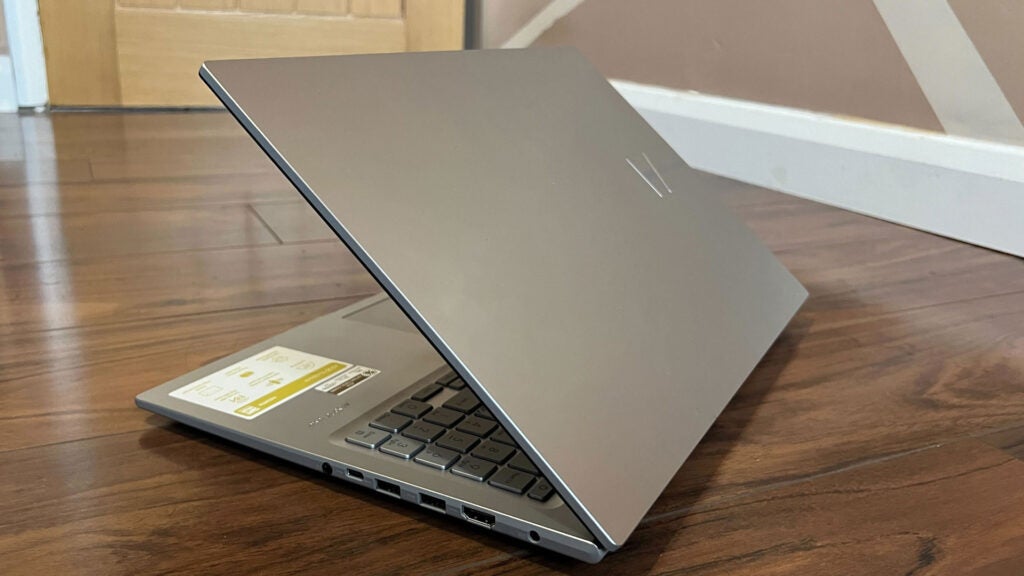
To put things into perspective, our battery benchmarks showed the Asus Vivobook 16 lasting just shy of seven hours on a single charge when dealing with general office workloads like video calls, spreadsheets, and word processing.
Cranking up the brightness to max will, as always, drastically reduce this and cause charging to slow to a crawl. But out of direct sunlight in the average office environment, you won’t need to panic should you forget your adapter at home. So long as you charged it up the night before, that is. That’s why optional USB-C charging is always worth aiming for – you can nab just about anyone’s tablet or ultrabook power brick to charge up over lunch.
Latest deals
Should you buy it?
You want a simple, no-frills office machine
The Asus Vivobook 16 is a portable workhorse you won’t struggle to use when not tethered to a power socket.
You want a more premium experience
For the money, the Asus Vivobook 16 is easily usurped by slightly older models with more generalized specs.
Final Thoughts
At £700, the 16-inch Asus Vivobook is no slouch in the most average situations a laptop can find itself in. It’s light enough to carry around, with a power brick to match. It won’t buckle under the virtual weight of too much admin work. This laptop does start at £600 for the Intel Core i5 version, and it might be a worthy compromise for those looking for straightforward productivity use.
With lacklustre speakers and a hinge that stops short of helping it become a good entertainment companion, however, there are just a few too many compromises here to truly recommend it at this price point. The 16GB RAM is this model’s biggest strength in terms of raw power but competing devices are hard to ignore with the HP Pavilion SE 14 providing a more modern processor for less money as well as a better speaker system.
For budget to mid-range Windows laptops, there’s also intriguing competition in the form of Chromebook Plus devices now too, offering similar productivity capabilities for under £500, like with the Asus Chromebook Plus CX34. Our best budget laptops guide also offers a wider selection of sub-£600 picks.
If you know you’ll take full advantage of the 16GB RAM and the Intel Core i7 chip, that does enable you to squeeze in a small amount of gaming and editing, then the Asus Vivobook 16 could suit you. But, there are plenty of hangups to put you off.
How we test
Every laptop we review goes through a series of uniform checks designed to gauge key things, including build quality, performance, screen quality and battery life.
These include formal synthetic benchmarks and scripted tests, plus a series of real-world checks.
We used as our main laptop for at least a week.
Tested the performance via both benchmark tests and real-world use.
We tested the screen with a colorimeter and real-world use.
We tested the battery with a benchmark test and real-world use.
FAQs
The Vivobook 16 and 16X are very different devices, with the former costing less and focused on productivity performance. The latter can be equipped with a discrete graphics card and offers a higher quality OLED display.
Like many devices in the sub-£800 bracket, the Asus Vivobook 16 does not offer a touchscreen.


